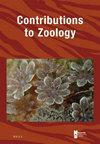白鹡鸰种群的进化史(过目目:摇尾科:白摇尾)
IF 2.2
2区 生物学
Q1 ZOOLOGY
引用次数: 1
摘要
白色鹡鸰(Motacilla alba)物种在不同的地理区域具有独特的羽毛,可以作为测试进化假设的模型。尽管分类群之间的遗传相似,但其羽毛种类繁多,并且与这种多样性相关的进化事件知之甚少。因此,我们在白鹡鸰的繁殖范围内取样:分析了来自古北和地中海74个地区的338只个体。我们基于两个线粒体DNA标记对白鹡鸰复合体进行了研究,以推断其进化史。我们的系统发育树突出了mtDNA序列(ND2, CR)和一个核标记(CHD1Z),它们部分对应于先前描述的进化支:北古北(进化支N);东亚和中亚(东南支);亚洲西南部,西至不列颠群岛(西南支);摩洛哥(进化支M)。所有进化支的分化都发生在更新世。我们还对三个遗传谱系(不包括进化枝M)使用了生态位模型;结果表明,这些支系的生态位与系统发育差异是一致的。白鹡鸰祖先区重建结果表明,分散对这一复杂物种的分布和分化产生了影响。白鹡鸰群最重要的变异事件可能是由戈壁和塔克拉玛干沙漠造成的。我们得出结论,白鹡鸰群的祖先可能在地中海,其地理位置对物种形成过程有相当大的影响。本文章由计算机程序翻译,如有差异,请以英文原文为准。
The evolutionary history of the white wagtail species complex, (Passeriformes: Motacillidae: Motacilla alba)
The white wagtail (Motacilla alba) species complex with its distinctive plumage in separate geographical areas can serve as a model to test evolutionary hypotheses. Its extensive variety in plumage, despite the genetic similarity between taxa, and the evolutionary events connected to this variety are poorly understood. Therefore we sampled in the breeding range of the white wagtail: 338 individuals were analyzed from 74 areas in the Palearctic and Mediterranean. We studied the white wagtail complex based on two mitochondrial DNA markers to make inferences about the evolutionary history. Our phylogenetic trees highlight mtDNA sequences (ND2, CR), and one nuclear marker (CHD1Z), which partly correspond to earlier described clades: the northern Palearctic (clade N); eastern and central Asia (clade SE); south-western Asia west to the British Isles (clade SW); and Morocco (clade M). The divergence of all clades occurred during the Pleistocene. We also used ecological niche modelling for three genetic lineages (excluding clade M); results showed congruence between niche and phylogenetic divergence in these clades. The results of the white wagtail ancestral area reconstruction showed the influence of dispersal on the distribution and divergence of this complex species. The most important vicariance event for the white wagtail complex may have been caused by the Gobi and Taklamakan deserts. We conclude that the ancestral area of the white wagtail complex was probably in the Mediterranean, with its geography having a considerable effect on speciation processes.
求助全文
通过发布文献求助,成功后即可免费获取论文全文。
去求助
来源期刊

Contributions to Zoology
生物-动物学
CiteScore
4.00
自引率
4.50%
发文量
16
审稿时长
>12 weeks
期刊介绍:
Contributions to Zoology solicits high-quality papers in all systematics-related branches of comparative zoology (including paleozoology). Preference will be given to manuscripts dealing with conceptual issues and to integrative papers (e.g., ecology and biodiversity, morphology and phylogeny and character state evolution, phylogeny and historical biogeography, systematics and bioinformatics, bioinformatics and biodiversity, habitat disturbance and biogeography, etc.). Reviews and alpha-taxonomic contributions are considered for publication, but acceptance will depend on their high quality and exceptional nature.
 求助内容:
求助内容: 应助结果提醒方式:
应助结果提醒方式:


